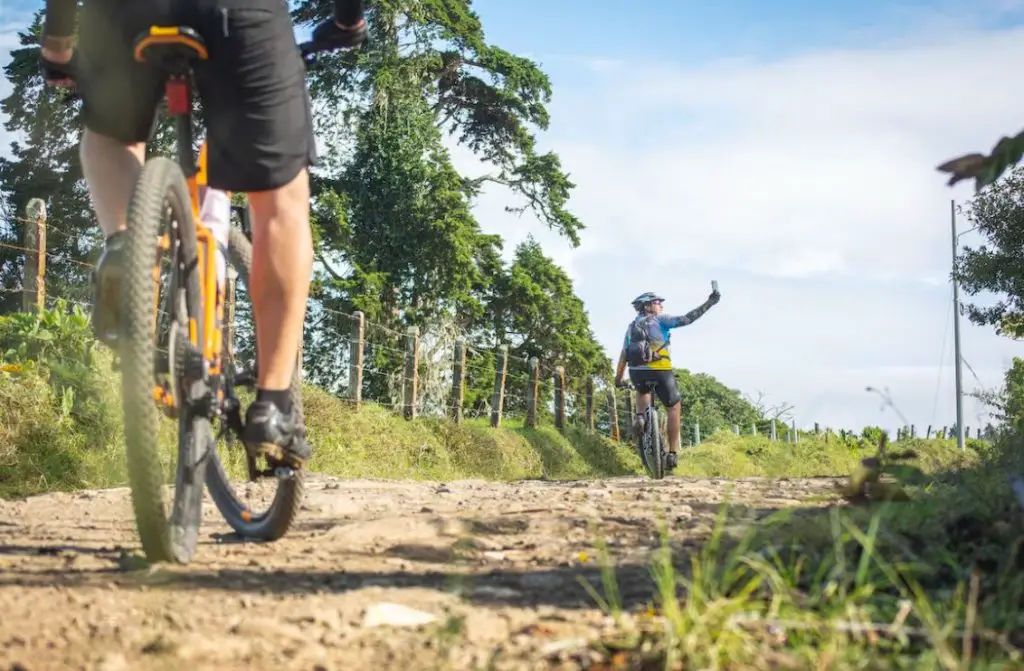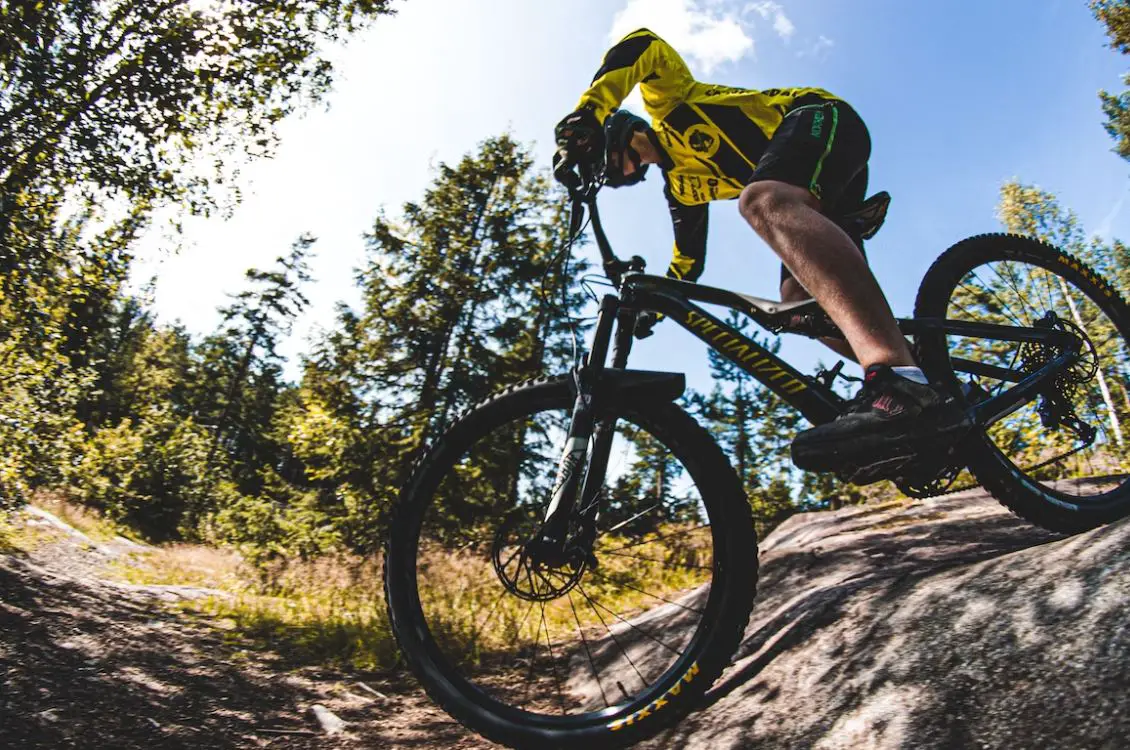Cycling has long been a favored pastime, offering numerous health benefits and an escape from the daily grind.
But what if you’re dealing with a Baker’s cyst? Can you still ride your bike?
Sadly, it’s not recommended.
A Baker’s cyst, also known as a popliteal cyst, is a fluid-filled sac that forms behind the knee.
It can cause a bulge and a feeling of tightness, and sometimes pain that gets worse with physical activity or when fully straightening or bending the knee.
While cycling is a low-impact exercise that can be beneficial for many people, it may not be the best activity for those with Baker’s cysts.
In this post, we’ll take a look at why you can’t ride your bike with a Baker’s cyst and the potential risks and complications if you cycle. Plus, I’ll go over a couple of FAQs.
Does Bike Riding Aggravate Baker’s Cyst?
Yes, bike riding has the potential to aggravate a Baker’s cyst.
When you ride a bike, the repetitive motion of pedaling and the pressure applied to the knee joint can put strain on the cyst.

This increased pressure can cause the cyst to enlarge, become more painful, or even rupture.
Also Read: Can I Bring My Bike Into Walmart?
The friction and movement involved in biking can also irritate the cyst and lead to worsened symptoms such as pain, swelling, and limited range of motion.
Why You Shouldn’t Ride a Bike with a Baker’s Cyst
Apart from potentially worsening the existing symptoms, ruptures or leaks, a Baker’s cyst can impact your performance on the road which makes it dangerous.
Here are some of the impacts on your cycling performance:
Reduced Mobility and Flexibility
A Baker’s cyst can limit the normal range of motion in your knee joint. This means you may struggle to fully extend your leg or achieve smooth pedal strokes.
The cyst can create a feeling of tightness or stiffness, making it challenging to move your knee freely.
As a result, your biking technique may be compromised, and certain movements that require a full range of motion might be difficult to perform – which is very dangerous!
Impaired Pedal Stroke And Power
Pain from the cyst can significantly affect your ability to generate power while biking.
When your knee movement is restricted or painful, it becomes harder to apply force to the pedals consistently.
This can result in a less effective transfer of energy, leading to reduced power output and slower speeds. It can be frustrating to feel like you’re pedaling harder but not achieving the desired results.
Unpleasant Experience
Biking with a Baker’s cyst can be an uncomfortable experience.
The constant pressure and movement associated with cycling can exacerbate the pain and discomfort caused by the cyst.
Every pedal stroke can remind you of the presence of the cyst, making the activity less enjoyable.
Also Read: How long does it take to bike 60 miles?
The discomfort and pain can also be intensified during longer rides or more intense workouts, limiting your ability to fully engage in these activities.
Alternative Physical Activities
While biking may not be recommended with a Baker’s cyst, there are alternative activities that you can explore to stay active and maintain your fitness level:
Some of these include:
Swimming
Take a dip and enjoy the benefits of swimming! Swimming is a fantastic low-impact activity that provides a full-body workout without putting excessive stress on your knee joint.
The buoyancy of the water reduces the impact on your joints while allowing you to engage in cardiovascular exercise and strengthen your muscles.
Whether it’s doing laps, water aerobics, or even water jogging, swimming can be a refreshing and joint-friendly alternative to biking.
Yoga or Pilates
When it comes to promoting flexibility, balance, and core strength while minimizing stress on the knee joint, yoga and Pilates are your go-to options.
These mind-body practices offer a wide range of exercises and poses that can be adapted to your abilities and comfort level.
The controlled movements and emphasis on proper alignment in yoga and Pilates help improve joint stability, enhance flexibility, and build strength in a gentle and controlled manner.
Look for classes or tutorials specifically designed for individuals with knee concerns, and don’t be afraid to communicate with instructors about your condition.
Walking
Sometimes, the simplest activities can have a tremendous impact on your overall fitness.
Walking is a gentle exercise that you can easily modify to accommodate your comfort level and promote joint health.

Start with a leisurely stroll and gradually increase your pace and distance as you build strength and confidence.
Walking is not only beneficial for cardiovascular health but also helps maintain joint mobility and strengthen the muscles surrounding your knee.
Quick Recap
It is not recommended to ride a bike if you have a Baker’s cyst. Cycling can aggravate the cyst and make the symptoms worse.
Instead, try walking, swimming or yoga.
Also Read: Why Does My Tire Keep Popping?
Remember, the goal is to find activities that keep you active, fit, and happy while also prioritizing the health of your Baker’s cyst
The bottom line – It is important to consult with your doctor before engaging in any sort of physical activity if you have a Baker’s cyst.
FAQs
Can You Get A Cyst From Biking?
Yes, it is possible to get a cyst from biking. Saddle sores are a common issue for cyclists, and if left untreated, they can develop into a hard, persistent lump called a cyst, which can sometimes even require surgery for removal.
Can You Cycle With Knee Problems?
Cycling can be a great exercise for people with knee problems as long as it is done correctly and with proper precautions. Cycling is a low-impact exercise that can help improve knee joint health by gently bending and stretching the joint, and by improving the muscle strength around the knee joint.
What Activities Aggravate A Baker’s Cyst?
Activities that involve repetitive knee movements, such as running, jumping, or squatting, can aggravate a Baker’s cyst. High-impact activities like basketball or tennis can also cause increased pressure on the knee joint, leading to increased pain and swelling.
Does Exercise Aggravate A Baker’s Cyst?
Exercise can aggravate a Baker’s cyst, especially if it involves repetitive knee movements or high-impact activities. However, low-impact exercises like swimming, walking, or cycling on a stationary bike can help reduce inflammation and improve circulation, which can promote healing.

